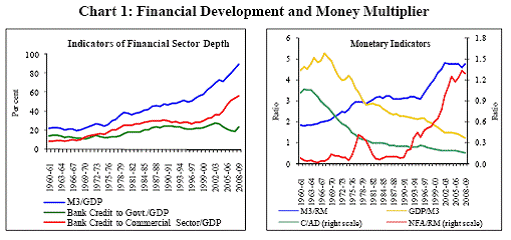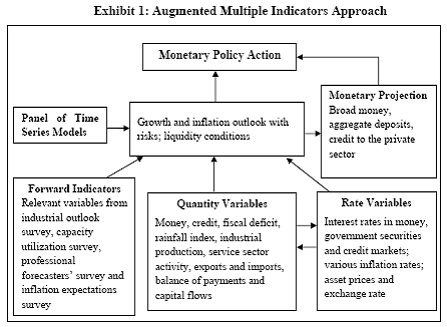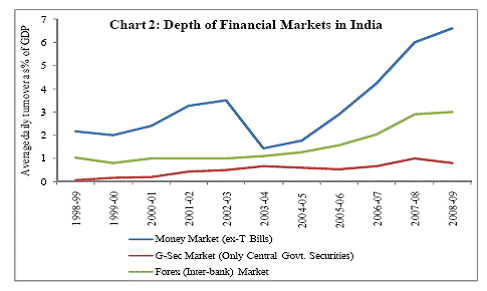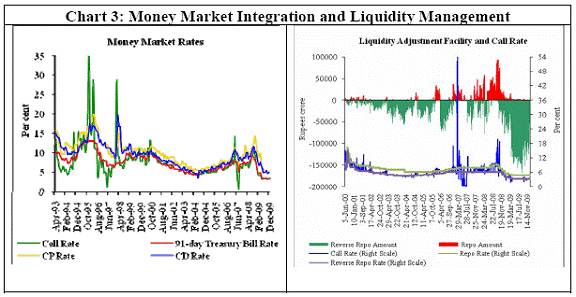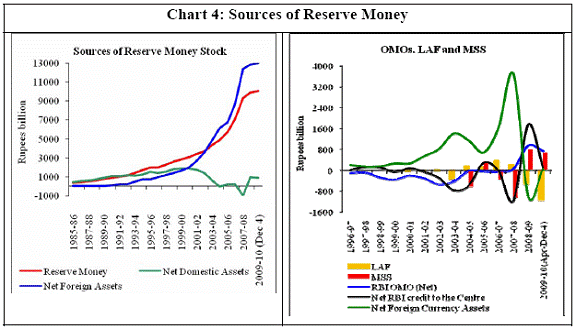 IST,
IST,


Monetary Policy Framework in India: Experience with Multiple-Indicators Approach
Shri Deepak Mohanty, Executive Director, Reserve Bank of India
delivered-on ମାର୍ଚ୍ଚ 02, 2010
I am honoured to deliver the 2nd Professor Baidyanath Mishra Lecture. Prof. Mishra is a multi-faceted personality: an economist, an educationist and an institution-builder. Above all, he is a great teacher who inspired generations of students. I thank the Orissa Economic Association for giving me this opportunity. 2. I will set out how the framework of monetary policy has evolved over the last two and half decades. First, I will touch upon the objectives of monetary policy and then discuss briefly about how monetary framework has evolved globally before dwelling on the Indian experience. I will conclude with an overall assessment of the monetary policy regime in India. I. Objectives of Monetary Policy 3. Central banks derive their objectives from their respective mandates. Monetary policy could have either a single objective of price stability or multiple objectives besides price stability. In the literature and in practice, price stability is considered as the dominant objective of monetary policy. 4. The preamble to the Reserve Bank of India Act, 1934 delineates the basic functions of the Bank as “to regulate the issue of Bank notes and keeping of reserves with a view to securing monetary stability in India and generally to operate the currency and credit system of the country to its advantage”. The objectives of monetary policy evolved from this broad guideline as maintaining price stability and ensuring adequate flow of credit to the productive sectors of the economy. In practice, monetary policy endeavoured to maintain a judicious balance between economic growth and price stability. 5. The question is how do we define price stability? Price stability does not mean zero inflation. It is considered as a low and stable order of inflation. This is because both high inflation and deflation impose costs on the economy by way of loss of output and misallocation of resources. For advanced economies, an inflation rate of about 2 per cent is equated with price stability. For an emerging market economy (EME) like India, going through significant structural changes, a slightly higher rate of inflation which allows relative prices to adjust smoothly can be considered appropriate. The Chakravarty Committee (1985) had defined an inflation rate of 4 per cent per annum as tolerable for India. 6. India is a moderate inflation country with the long-term average inflation rate remaining in a single digit of about 7.5 per cent since 1970-71. Over this 40-year period, the average inflation rate, however, has decelerated to about 5.5 per cent in the decade of 2000s. The medium term objective of monetary policy is to bring down the average inflation rate to around 3.0 per cent consistent with India's integration with the global economy.1 7. While a low level of inflation is essential to sustain high levels of growth, it is not sufficient to maintain financial stability, as has been demonstrated by the recent global financial crisis. Consequently, besides price stability, ensuring orderly conditions in the financial markets has become a key policy concern. In this context, it may be indicated that financial stability had emerged as another important objective of monetary policy in India much before the crisis. Thus, monetary policy in India has evolved to have multiple objectives of price stability, financial stability and growth. These objectives are not inherently contradictory, rather mutually reinforcing. Price and financial stability are important for sustaining high levels of growth which is the ultimate objective of public policy. II. Evolution of Monetary Policy Framework 8. In order to attain the objectives of policy it is necessary to have a consistent policy framework. At a theoretical level, the evolution of monetary framework could be traced to the desire to reduce inflationary bias in the economy through various refinements under the broader debate on 'rules' versus 'discretion' in policy making, and more recently, 'constrained discretion' which believes that the doctrines of 'rules' and 'discretion' are not mutually exclusive2. In practice, the nature of the framework is contingent upon two important considerations. First, the level of development of financial markets and institutions; and second, the degree of openness of the economy to trade and capital flows. In India, like most other countries, the monetary policy framework has evolved in response to and in consequence of financial developments and shifts in the underlying transmission mechanism. How did monetary policy framework evolve globally? 9. In order to achieve the objectives of monetary policy which are not under the direct control of central banks, monetary authorities typically set 'intermediate targets’, which bear a stable relationship with the overall objectives of monetary policy3 . The selection of intermediate target is also conditional upon the channels of monetary transmission - the process through which monetary policy actions impact the ultimate objectives. Historically, although credit targets were prevalent, the concept of a formal intermediate target emerged with the monetarist emphasis on money targeting in an environment of worsening inflation in the 1970s and observed stable relationship among money, output and prices. A number of major central banks such as Switzerland, Germany, Japan, the UK, the USA, France, Australia and Canada adopted monetary targets in the mid-1970s. In the 1980s, financial market innovations reduced the need for financial intermediation by the banking system and in turn began to impart volatility to the behaviour of monetary aggregates. The consequent weakening of the stable relationship among money, output and prices made many advanced country central banks to move towards signaling monetary policy stance through setting of interest rates. Monetary targeting, however, continued in some form in many bank-based economies in continental Europe such as Germany, France and Switzerland where it was possible to establish money demand stability with redefinition of monetary aggregates. 10. Given the under-developed nature of financial markets coupled with the quantity-based credit channel of monetary transmission, money target was considered suitable in case of developing countries. In the 1980s, monetary targeting was adopted in many developing countries such as Brazil, China, Indonesia, Korea, Malaysia, Peru, Philippines, Russia and Venezuela. As financial innovations spread to developing countries and they became more open to external capital flows, monetary targeting proved less effective. 11. The weakening of monetary targeting framework, both in advanced and developing countries, triggered a search for alternate monetary frameworks. As it was also widely recognised that monetary policy can contribute to sustainable growth by maintaining price stability, beginning with New Zealand in 1989, a number of advanced and developing countries moved to ‘inflation targeting’. Under this approach, central banks target the final objective, i.e., inflation itself rather than targeting any intermediate variable. Among the major central banks, the Bank of England (BoE) formally adopted inflation targeting in 1992. 12. The US Federal Reserve (Fed) follows a more eclectic approach, which can be termed as risk management approach, in pursuit of its twin objectives of price stability and maximum employment. Under the risk management approach, the Fed takes a policy view on interest rate on consideration of balance of risks to inflation and growth. Although the European Central Bank (ECB) has a single mandate of price stability, it is not an inflation targeting central bank. Its policy decisions are based on a ‘two pillars’ strategy comprising of ‘economic analysis’ and ‘monetary analysis’. Money supply continues to be an important variable in its analytical tool under the second pillar reflecting the enduring influence of the German Bundesbank which was a major monetary targeting central bank. Notwithstanding the difference in approach among central banks, price stability is accepted as the predominant objective of monetary policy. How did monetary policy framework evolve in India? 13. In India also, monetary policy framework has undergone significant transformation over time. In the 1960s, as inflation was considered to be structural and inflation volatility was mainly caused by agricultural failures, there was greater reliance on selective credit controls. The aim was to regulate bank advances to sensitive commodities to influence production outlays, on the one hand and to limit possibilities of speculation, on the other. In the 1970s, there was a surge in inflation on account of monetary expansion induced by expansionary fiscal policies besides the oil price shocks. By the early 1980s, there was a broad agreement on the primary causes of inflation. It was argued that while fluctuations in agricultural prices and oil price shocks did affect prices, sustained inflation since the early 1960s could not have occurred unless it was supported by the continuous excessive monetary expansion generated by the large-scale monetisation of the fiscal deficit4. 14. Against the backdrop, the Committee to Review the Working of the Monetary System (Chairman: Prof. Sukhamoy Chakravarty; 1985), set up by the Reserve Bank, recommended a monetary targeting framework to target an acceptable order of inflation in line with desired output growth. It also recommended for limiting monetary expansion through the process of monetisation of fiscal deficit by an agreement between the Reserve Bank and the Government.5 With empirical evidence supporting reasonable stability in the demand function for money, broad money (M3) formally emerged as an intermediate target. Under this approach, a monetary projection is made consistent with the expected real GDP growth and a tolerable level of inflation6. The framework was, however, a flexible one allowing for various feedback effects. Moreover, money supply target was relatively well understood by the public at large.7 15. With the pace of trade and financial liberalization gaining momentum following the initiation of structural reforms in the early 1990s, the efficacy of broad money as an intermediate target of monetary policy came under question. The Reserve Bank's Monetary and Credit Policy for the First Half of 1998-99 observed that financial innovations emerging in the economy provided some evidence that the dominant effect on the demand for money in the near future need not necessarily be real income, as in the past. 16. Since the mid-1990s, apart from dealing with the usual supply shocks, monetary policy had to increasingly contend with external shocks emanating from swings in capital flows, volatility in the exchange rate and global business cycles. Subsequently, increase in liquidity emanating from capital inflows raised the ratio of net foreign assets (NFA) to Reserve Money (Chart 1). This rendered the control of monetary aggregates more difficult. Consequently, there was also increasing evidence of changes in the underlying transmission mechanism of monetary policy with interest rate and the exchange rate gaining importance vis-à-vis quantity variables.8 Bank credit to private sector as a per cent of GDP also started rising, though it still remains low as compared to advanced economies and many EMEs underscoring the potential for greater credit penetration (Table 1). These developments necessitated refinements in the conduct of monetary policy.
17. Against this backdrop, the Reserve Bank formally adopted a ‘multiple indicators approach’ in April 1998 with a greater emphasis on rate channels for monetary policy formulation. As a part of this approach, information content from a host of quantity variables such as money, credit, output, trade, capital flows and fiscal position as well as from rate variables such as rates of return in different markets, inflation rate and exchange rate are analyzed for drawing monetary policy perspectives. The multiple-indicators approach, as conceptualised when Dr. Bimal Jalan was the Governor, continued to evolve and was augmented by forward looking indicators and a panel of parsimonious time series models. The forward looking indicators are drawn from the Reserve Bank’s industrial outlook survey, capacity utilization survey, professional forecasters’ survey and inflation expectations survey9. The assessment from these indicators and models feed into the projection of growth and inflation. Simultaneously, the Reserve Bank also gives the projection for broad money (M3), which serves as an important information variable, so as to make the resource balance in the economy consistent with the credit needs of the government and the private sector. Thus, the current framework of monetary policy can be termed as an augmented multiple indicators approach as illustrated below (Exhibit 1).
18. This large panel of indicators is at times criticised as a 'check list' approach, as it does not provide for a clearly defined nominal anchor for monetary policy. However, given the level of financial market development, the evolving nature of monetary transmission and the need to maintain the resource balance between the government and the private sector, monetary policy assessment becomes inherently complex. 19. Globally, it is now recognised that the task of monetary management has become more challenging. In view of central banks operating in an environment of high uncertainty regarding the functioning of the economy as well as its prevailing state and future developments, a single model or a limited set of indicators may not be a sufficient guide for monetary policy. Instead, an encompassing and integrated set of data is required. This reinforces the usefulness of monitoring a number of macroeconomic indicators in the conduct of monetary policy. In the context of the recent crisis, it is argued that monitoring money and credit may help policymakers interpret asset market developments and draw implications from them for the economic and financial outlook.10 There is a need to raise awareness in the central banking community of the importance of monetary analysis and its implications, both for economies individually and globally.11 Thus, there is now increasing support for a broad-based approach to monetary policy. III. Experience with Monetary Framework in India Experience with Monetary Targeting Approach 20. An earlier paper12 examined the experience with the monetary targeting approach. Despite the adoption of formal monetary targeting, no specific money targets were set during the period 1985-90 except for fixing a ceiling linked to average growth of broad money (M3) in previous year(s). This was because there continued to be large overhang of excess liquidity due to primary money creation. The biggest impediment to explicit monetary targeting was the fact that the Reserve Bank had no controls over its credit to the central government, which accounted for the bulk of the creation of reserve money. The Reserve Bank could at best set limits on the secondary expansion of money through instruments such as cash reserve ratio (CRR), statutory liquidity ratio (SLR) and selective credit controls. As a result, CRR reached its prescribed ceiling of 15 per cent of net demand and time liabilities (NDTL) of banks in July 1989 and the SLR reached the peak of 38.5 per cent in September 1990. Despite these measures, however, money supply growth remained high, which contributed to inflation. The setting of monetary targets and actual achievements during the monetary targeting period is presented below in Table 2.
Experience with Multiple Indicators Approach 21. The process of financial liberalization and deregulation of interest rates introduced since the early 1990s enhanced the role of market forces in the determination of interest rates and the exchange rate. Accordingly, the Reserve Bank placed greater emphasis on the money market as the focal point for the conduct of monetary policy and for fostering its integration with other market segments. Following the Narsimham Committee (1998) recommendations, the Reserve Bank introduced the liquidity adjustment facility (LAF) in June 2000 to manage market liquidity on a daily basis and also to transmit interest rate signals to the market. Collateralized borrowing and lending operations (CBLO) was introduced as a new money market instrument in January 2003. The call money market was transformed into a pure inter-bank market by August 2005 in a phased manner. 22. As a result, the money market developed significantly over the years as reflected in increased turnover in various market segments (Table 3). Along with developing money markets, the Reserve Bank has also undertaken various measures to develop the government securities and foreign exchange market, increasing the depth of the financial markets (Chart 2).
23. All these reforms have also led to improvements in liquidity management operations by the Reserve Bank as reflected in general containment of call rates within the LAF corridor except occasional volatility. Apart from imparting stability in call money rates, this has also resulted in greater market integration as reflected in close co-movement of rates in various segments of the money market (Chart 3). The rule-based fiscal policy pursued under the Financial Responsibility and Budget Management (FRBM) Act, by easing fiscal dominance, contributed to overall improvement in monetary management.
24. During the recent period, the issue of managing large and persistent capital inflows in excess of the absorptive capacity of the economy added another dimension to the liquidity management operations. Initially, the liquidity impact of large capital inflows were sterilised through open market operation (OMO) sales and LAF operations. Given the finite stock of government securities in the Reserve Bank’s portfolio and the legal restrictions on issuance of its own paper, additional instruments other than LAF were needed to contain liquidity of a more enduring nature. This led to the introduction of the market stabilisation scheme (MSS) in April 2004. Under this scheme, short term government securities were issued but the amount remained impounded in the Reserve Bank’s balance sheet for sterilisation purposes. Interestingly, in the face of reversal of capital flows during the recent crisis, unwinding of such sterilised liquidity under the MSS helped to ease liquidity conditions (Chart 4).
25. The efficient conduct of monetary policy is judged ultimately in terms of its ability to stabilise real economic activity and inflation and also ensuring financial stability consistent with the policy objectives. An assessment of the multiple indicators approach for the period 1998-99 to 2008-09 reveals that actual outcome of GDP growth has been generally higher than the projections indicated in the monetary policy statements, while it has generally been lower in case of inflation (Table 4). IV. Overall Assessment 26. The monetary policy framework in India has undergone significant shifts from a monetary targeting regime to a multiple indicators regime. Such a transition was conditioned by the developments of financial markets, increasing integration of the Indian economy with the global economy and changing transmission of monetary policy. The multiple indicators approach, conceptualized in 1998, has since been augmented by forward looking indicators from surveys and a panel of time series models. Moreover, the multiple indicators approach continues to evolve. Though the multiple indicators approach is subject to criticism for the absence of a clearly defined anchor, in the wake of the recent global financial crisis there is recognition of the usefulness of a broad indicators-based assessment of monetary policy. 27. On the basis of the above assessment, I will give a comparison of the relative performance of the monetary regimes in terms of key macroeconomic variables over three periods: (i) the decade preceding the monetary targeting period (1976-85); (ii) monetary targeting period (1986-98) and (iii) multiple indicators period so far (1999-2009) (Table 5).
28. From this overall assessment, the following broad conclusions can be drawn.
* Speech by Deepak Mohanty, Executive Director, Reserve Bank of India, delivered at the Conference of the Orissa Economic Association in Baripada, Orissa, on 21st February 2010. The assistance provided by Shri Binod B. Bhoi is acknowledged. 1 Reserve Bank of India(2010), Third Quarter Review of Monetary Policy for the year 2009-10, Reserve Bank of India, January 29, 2010. 2 Bernanke, Ben S. “Constrained Discretion and Monetary Policy”. Remarks before the Money Marketeers of New York University, New York, February 3, 2003. 3 Friedman, B. (1990), "Targets and Instruments of Monetary Policy". In B. Friedman and F. Hahn (eds.) Handbook of Monetary Economics, Amsterdam, North-Holland. 4 Reserve Bank of India (2005), Report on Currency and Finance 2003-04, pp 53-79. 5But it took almost twelve years to fructify when automatic monetization through ad hoc Treasury Bills was abolished and a system of Ways and Means Advances (WMA) was introduced in 1997. 6 Technically, in a simple form, if expected real GDP growth is 6 per cent, the income elasticity of demand for money is 1.5 and a tolerable level of inflation is 5 per cent, the broad money (M3) expansion target can be set at 14 per cent (M3 growth = 1.5 x 6 + 5 = 14%). 7 Rangarajan, C. (1997), “Role of Monetary Policy”, Economic and Political Weekly, December 27. 8 Reserve Bank of India (1998), The Working Group on Money Supply: Analytics and Methodology of Compilation (Chairman: Dr. Y.V. Reddy). 9 Following the recommendations of the Reserve Bank’s Working Group on Surveys (Chairman: Deepak Mohanty; 2009), the results of some of the surveys such as the Survey of Professional Forecasters and Industrial Outlook Survey are disseminated in the public domain (www.rbi.org.in). 10 Goodhart, C (2007) “Whatever Became of the Monetary Aggregate?” LSE Financial Markets Group Special Paper No. 172. 11 Trichet, Jean-Claude (2010), Panelist Comments on “Fifty Years of Monetary Policy: What Have We Learned?” at the Symposium for the 50th anniversary of the Reserve Bank of Australia, Sydney, February 9. 12 Mohanty and Mitra (1999), “Experience with Monetary Targeting in India”, Economic and Political Weekly, January 16-23, pp 123-132. 13 It may, however, be noted that in the pre-monetary targeting period, higher inflation volatility was also significantly contributed by the two major oil price shocks. |
||||||||||||||||||||||||||||||||||||||||||||||||||||||||||||||||||||||||||||||||||||||||||||||||||||||||||||||||||||||||||||||||||||||||||||||||||||||||||||||||||||||||||||||||||||||||||||||||||||||||||||||||||||||||||||||||||||||||||||||||||||||||||||||||||||||||||||||||||||||||||||||||||||||||||||||||||||||||||||||||||||||||||||||||||||||||||||||||||||||||||||||||||||||||||||||||||||||||||||||||||||||||||||||||||||||||||||||||||||||||||||||||||||||||||||||||||||||||||||||||||||||||||||||||||||||||||||||||||||||||||||||||||||||||||||||||||||||||||||||||||||||||||||||||||||||||||||||||||||||||||||||||||||||||||||||||||||||||||||||||||||||||||||||||||||||||||||||||||||||||||||
ପେଜ୍ ଅନ୍ତିମ ଅପଡେଟ୍ ହୋଇଛି:






